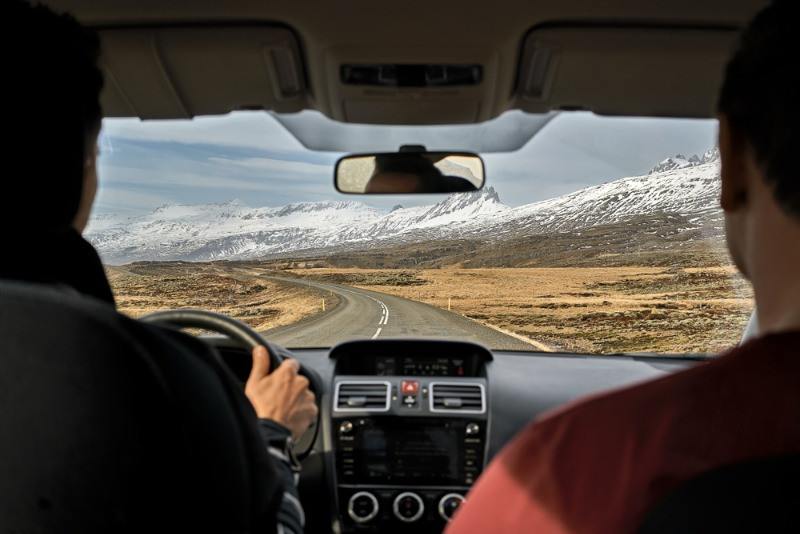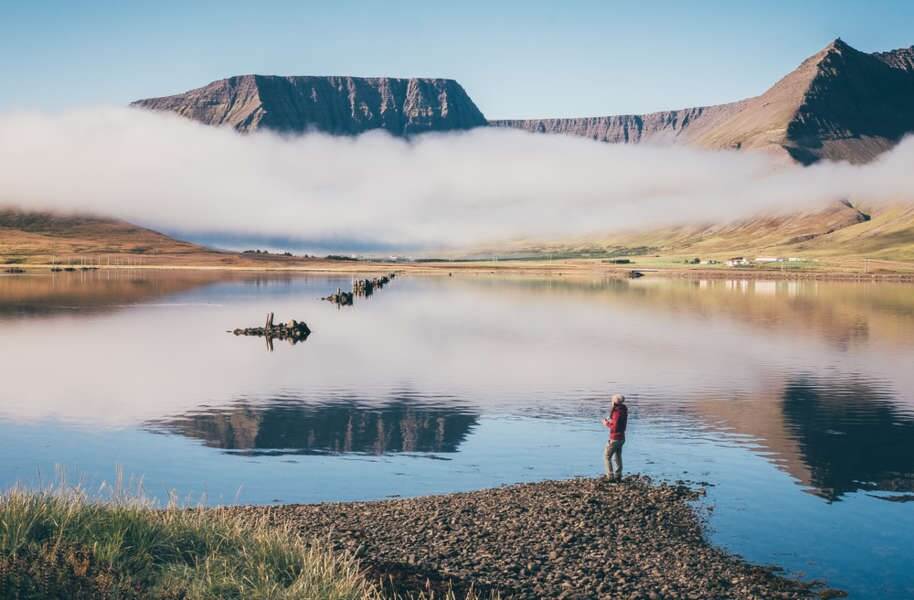Have you finally decided to take that long-awaited trip to Iceland? If you have, congratulations. You have just made the right travel decision that will definitely change your life forever. Iceland is the 'Land of Fire and Ice' also famous for breathtaking sites, like the largest glacier in Europe, its stunning volcano sites, irresistible beaches, and waterfalls, ice caves that can only be explored in the winter, etc. - and if you are not careful with choosing the right car for the right reason your wonderful experience could eventually turn into a nightmare.
However, to enjoy your trip to Iceland, you need to first do thorough research to find the best car rental in Iceland for you. For Instance, you would want to ask yourself - Which car should I choose in Iceland that will give the best comfort and at the same time withstand the unpredictable Iceland weather?
The road network in Iceland is quite different here than what you have in many other countries of Europe. In this article, you will learn what sort of vehicle to drive and the best car rental tips to consider before driving out.
The roads in Iceland
The most breathtaking wonder places in Iceland are located outside the main road. And getting to these wonderful places requires you to travel through rugged gravel roads, mountain roads, dirt roads, or the infamous Highland roads (F- roads). If you are the adventurous type and visiting many of these breathtaking wonders of nature at a time is what you wanted, then we highly recommend you rent a 4x4 vehicle.
The Weather in Iceland
There is no place like Iceland when it comes to unpredictable weather conditions. At times, the metrological center's forecasts are made nonsense by these erratic weathers. The Met officer will at times forecast a most beautiful weather condition suitable for tourists and just seconds when they are about packing their travel itinerary it becomes so cloudy. Sometimes, you could be in your car enjoying the beautiful wonders of nature and just in a twinkle of an eye, your car is covered with blizzards of snow. This is why it’s sometimes important to talk to the car rental customer service for information on rescue services on where to pick up your car in cases of emergencies.
Which Car Should I Choose in Iceland?
If you are going on a solo journey i.e. just all by yourself, outside the main road and your intention is to visit places like Látrabjarg, Mjóifjörður, the Vatnsnes Peninsula or some of the natural wonders including the waterfalls that are not near the main road you are better off with a pickup and drop midsized 4x4 car because the roads outside the main roads are mostly gravel roads.

However, if you have some company tagging along with you we highly recommend a larger vehicle with more space and larger winter tires for best comfort and security – You can hire a car like a Toyota Land Cruiser, to navigate the rough mountain of F-road especially when you are visiting during winter.
Do I Really Need A 4X4 Vehicle In Iceland?
If you are visiting Iceland with your family, you definitely will have lots of luggage to contend with and it’s only the boot of large 4x4 SUV rentals that can really help you manage these bags. Besides for a more convenient road travel experience, you need a car that is spacious, comfortable, and secure especially during the winter period and these are all that a 4x4 wheel drive vehicle will provide - when compared to a small city car or mid-size 4WD. Also if you are going to be maneuvering the rocky F-roads for adventurous sightseeing or you will be driving in the heavily snow-covered areas, the 4x4 is capable and definitely a must.
Why should I get a 4x4 car in Iceland?
If your trip to Iceland is scheduled during winter, you might miss some exciting and exotic places because most of the Highland roads are often very challenging with rugged gravel roads and are basically closed to tourists due to bad weather. It is not recommended to book a car that is small or a midsize car that is not 4WD if you want to visit these Highland roads. The best period to enjoy Iceland's most exotic places is from the beginning of July to mid-September.
But some tourists do take some risk...However, such risk is considered very dangerous and can severely damage the vehicle if stuck in one of those unbridged rivers which can lead to paying insurance cost that is far costlier than the total cost of the trip to the country. Imagine what sort of panic will consume your family or friends when your small car gets stuck in the middle of the river with strong current blasting on the car.
A case study was recorded in Þórsmörk (September 2018) of a tourist woman that got drowned when her small car got stuck in the middle of the river. This is just one of the many tragic and fatal circumstances that have led to the loss of lives among some irresponsible Icelandic tourists. This is why a 4x4 vehicle fixed with winter tires is your best bet when driving especially if you are going to be crossing the rivers in Iceland.
This is not to say that some 4x wheel drives don’t encounter such similar situations. The Highland road is very notorious for its difficult terrains and you need a well-equipped 4WD/4X4 vehicle that is convenient and secure. This is why native Icelanders would never risk their lives with such trips during the winter season. However, the magical northern lights including the ice caves and many other exotic and breathtaking locations are just too tempting a thought for tourists not to embark on such adventurous risk.

One thing you should know is that not everybody is permitted to rent a car (4x4 wheel drive). There are some basic requirements for renting 4x4 vehicles in Iceland and these requirements vary depending on which car rental agency you are dealing with. In fact, some ‘hire a car’ customer service will demand you state your age before you pick up your car. If you are less than 21 years of age, and you intend to hire a 4x4 vehicle, your application might be denied as those that are 21 years and above are ones permitted to rent a 4x4 vehicle in Iceland.
Iceland Car Rental Tips
When you arrive at the Iceland international airport, one thing you will notice is the availability of pick-up and drop services with their signboards boldly inviting you to come into their offices and pick up your car. This is if you have not actually booked a car online before arriving.
Anyways, here are some important car rental tips to keep in mind when driving in Iceland:
Tip #1 - The Gravel Protection Insurance in Iceland
Because of the many gravel roads in Iceland, it is important to have gravel protection insurance included in your rental car agreement. You wouldn’t want some little rocky stones smashing through your windshield or damaging your car.
Also, if you encounter a windy condition, your car could get damaged by the volcanic sand and ash coming from the nearby volcano. - These types of accidents are very common and car repair is very expensive in Iceland. This is why signing for gravel Protection insurance is advisable when you pick up your car. In fact; most rental agencies have this plan attached as additional add-ons when buying your car insurance.
Tip #2 - Don’t Stop in The Middle Of The Road
To avoid unnecessary accidents on Iceland roads, tourists are advised to keep on driving even when they feel like stopping to take a photograph of an event or place. The roads in Iceland are narrow roads and stopping in the middle of the road can cause accidents for cars coming along especially when the weather is not too clear for drivers to see properly. If you must take snapshots, there are lots of places to pull off on the main road and do your photograph sessions.
Tip #3 - Plan Ahead with Buying Fuel
Here is one important rental tip you shouldn’t skip - don’t wait till the last minute before you fill up your fuel tank. Planning ahead with your car fuel consumption can surely save you a lot of embarrassment on the road. As you go deeper into the ring roads away from Reykjavik, the fuel station becomes far apart from each other so it is advisable to fuel your car even when it is a half tank full.
Tip #4 - Book Your Car Well in Advance
If you are planning to visit Iceland for summer, you need to book your car well on time as this is a peak season for tourists to visit Iceland. The month of July and August is a rush period for car rental companies, and if you don’t book ahead of time, you might likely have to pay more to rent a car or you might altogether miss out on the best car bargain for your trip in the country. And if your favorite car is the Toyota Yaris, you need to make bookings on time as this car is getting popular among tourists coming to Iceland.

So, if you are visiting Iceland for the first time, the question of which car to choose can best be referred to your car rental customer service agents who are there to assist you to choose the best car for the right season. Have fun and drive safely!


 By
By


